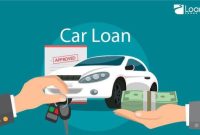
Can You Pay Car Loan With A Credit Card
Also Read
In most cases, it is not possible to pay a car loan with a credit card. Car loans are typically installment loans that are meant to be paid over a fixed period of time, while credit cards are revolving lines of credit that involve different payment terms and interest rates. Although it may be tempting to use a credit card to make car loan payments, it is generally not recommended. This is because credit card interest rates are typically higher than car loan interest rates, which means that using a credit card to pay off a car loan could end up costing you more money in the long run.
Additionally, some lenders may not accept credit card payments for car loans, which could make it difficult to make payments on time and in full. It is always a good practice to check with your lender about the payment options available to you, and to carefully consider the potential costs and benefits of each option before making a decision.
Background Information
Before we answer the question of whether or not you can pay a car loan with a credit card, it’s important to have a basic understanding of credit scores and how they affect your ability to obtain credit. A credit score is essentially a prediction of how likely you are to pay back a loan based on your past credit history. The higher your credit score, the more likely you are to be approved for credit products such as mortgages, credit cards, auto loans and other types of loans.Credit cards offer many benefits, including convenience and rewards programs, but they also come with potential downsides such as high interest rates and possible late fees.
If you already have a car loan, paying it off with a credit card could lead to higher debt and put you at risk of falling behind on payments, which could negatively impact your credit score. In addition, many lenders don’t allow car loan payments to be made with a credit card due to the high fees they incur from credit card companies.As with any financial decision, it’s important to weigh the pros and cons before deciding to pay off a car loan with a credit card. You may want to consider other options such as a personal loan or finding ways to cut expenses to pay off your car loan in a timely manner.
Ultimately, paying off any type of loan with a credit card should be done with caution and only after careful consideration of all of the potential risks and benefits.
Limitations And Restrictions
Limitations and restrictions are a common aspect of many areas of life. They are often put in place to protect individuals or groups, or to ensure that certain activities are carried out in a safe and responsible manner. However, sometimes limitations and restrictions can be seen as obstacles or hindrances to progress and growth. For example, certain regulations may limit innovation and creativity in a particular industry, or restrictions on personal freedoms may impede the ability of individuals to live the life they desire.
It is important to balance the need for limitations and restrictions with the desire for personal freedom and growth, and to ensure that any limitations or restrictions in place are necessary, reasonable, and fair.
Advantages And Disadvantages
Advantages and disadvantages are two sides of the same coin. They exist in every aspect of life, from technology to education, from work to leisure activities. On the one hand, advantages bring many benefits and make our lives more comfortable and convenient. For example, modern technology has made communication easier and faster, allowing us to connect with people around the world in real-time. On the other hand, there are always disadvantages that come with advantages. For instance, too much reliance on technology can lead to social isolation and lack of face-to-face communication.
Similarly, while working from home has the advantage of flexibility, it can also blur the line between work and personal time. It’s important to weigh both the advantages and disadvantages of any decision or action to make informed choices.
How To Pay A Car Loan With A Credit Card
Paying a car loan with a credit card can seem like a convenient option, but it’s important to understand the pros and cons before making a decision. First and foremost, it’s important to check with your lender to make sure they allow credit card payments. If they do, you can use your credit card to make a one-time payment or set up automatic payments. However, keep in mind that credit card companies often charge higher interest rates than car loans, so you may end up paying more in the long run.
Additionally, if you miss a credit card payment, it can negatively impact your credit score. On the other hand, using a rewards credit card to pay your car loan can earn you cash back or points, which can be beneficial if you pay off the balance in full each month. Ultimately, the decision to pay your car loan with a credit card should be based on your individual financial situation and goals. It may be helpful to consult with a financial advisor or credit counselor to determine the best course of action for your specific needs.
Process And Steps Involved
The process of completing any task involves a series of steps that need to be followed in order to achieve the desired outcome. These steps can vary depending on the task at hand, but generally involve certain key elements. First, there is the planning phase, where the task is analyzed and a plan is developed for how best to approach it. Next, the execution phase begins, where the actual work is done according to the established plan. This may involve multiple steps, such as conducting research, gathering materials, or working with others to achieve a common goal.
As the work progresses, it’s important to review and adjust the plan as needed, in order to stay on track and make sure that the final product meets the desired outcome. Finally, the task is completed, and there’s an evaluation phase in which the work is reviewed to identify any areas for improvement and to provide feedback for future tasks. These steps are applicable across a wide range of tasks, from writing a research paper, to designing a product or project, to planning an event or activity.
By following a well-defined process and staying organized and focused, anyone can achieve their goals and complete tasks with confidence and efficiency.
Credit Card Options
Credit cards are a popular payment method that offers convenience and flexibility for a wide range of transactions. When it comes to credit card options, there are many different types available to consumers. One common type is a rewards credit card, which allows cardholders to earn points or cash back on purchases. These rewards can then be redeemed for a variety of benefits, such as travel rewards, gift cards, or statement credits.Another type of credit card is a balance transfer card, which is designed to help consumers consolidate high-interest debt.
With a balance transfer card, consumers can transfer their high-interest credit card balances to a new card with a lower interest rate, potentially saving them money on interest charges.Secured credit cards are another option, which require a cash deposit to be made before the card can be used. This deposit acts as collateral and helps to mitigate the risk for the credit card issuer. Secured credit cards can be a good option for individuals with no credit history or poor credit, as they can help to establish or rebuild credit.
In addition, there are also credit cards specifically designed for students, business owners, and frequent travelers. These cards often come with unique benefits and rewards programs that cater to the specific needs of these groups.Overall, credit card options are plentiful, and it’s important for consumers to carefully consider their needs and financial situation before choosing a card. Taking the time to research different options, read the terms and conditions, and compare costs and benefits can help ensure that consumers choose the best credit card for their needs.
Points To Consider Before Opting For This Method
Before deciding to use a particular method, there are several points that should be considered. Firstly, it is important to identify the specific goal that is trying to be achieved. Different methods may be more effective for different goals, so it is important to make sure that the chosen method is relevant and appropriate.Secondly, the resources that are required for the method should be taken into account. This includes not just financial resources, but also time, personnel, and any other necessary equipment or materials.
It is also important to consider the potential risks and drawbacks of the method. This could include any potential negative effects on stakeholders, or the possibility of unexpected outcomes that could have a significant impact on the project or organisation.Another consideration is the level of expertise required to effectively implement the method. If the method requires specialized skills or knowledge, it may be necessary to invest additional resources in training or hiring staff.Finally, the potential impact of the method on the broader context should be considered.
This includes any potential ethical considerations or impact on the environment. It is important to ensure that the chosen method aligns with the values and principles of the organisation and society as a whole.
Risks And Drawbacks Of Paying Car Loan With A Credit Card
While it is possible to pay off a car loan with a credit card, there are risks and drawbacks to consider. One of the biggest risks of using a credit card to pay off a car loan is the potential for accumulating additional debt. Credit cards can carry high interest rates, and if you are unable to pay off the balance in full each month, the interest charges can quickly add up. This can result in you paying more in interest charges over time than you would if you had simply made the car loan payments on time.
Another drawback of using a credit card to pay off a car loan is the risk of damaging your credit score if you are unable to make your credit card payments on time. Late payments can negatively impact your credit score, making it harder to obtain credit in the future. Additionally, many lenders do not allow car loan payments to be made with a credit card, so it is important to check with your lender first to avoid any potential fees or penalties. While paying off a car loan with a credit card may seem like a convenient option, it is important to carefully consider the risks and drawbacks before proceeding.
Interest Rates
Interest rates are an important factor when it comes to borrowing money, whether it be for a car loan or credit card. While credit card interest rates tend to be higher than car loan rates , some people may wonder if they can use a credit card to pay off their car loan. While this may seem like a convenient option, it’s important to note that most lenders do not allow car loan payments to be made by credit card. This is because the fees associated with credit cards can be higher for the lender, and it can also have negative impacts on the borrower’s credit score.
Additionally, using a credit card to pay off a car loan can result in a higher overall cost due to the higher interest rates and potential fees. It’s important to carefully consider all options and consult with a financial advisor before making any decisions regarding borrowing money or managing debt.
Credit Score
A credit score is a number used by lenders to evaluate how likely an individual is to repay borrowed money. It is based on an individual’s credit history, which includes information about past borrowing and payment behavior, as well as outstanding debts. While a credit score is primarily used to determine eligibility and interest rates for loans, it can also impact credit card applications and other credit products. It is worth noting that while credit cards can be a convenient way to make payments, they are not always the best option for paying off debt.
In fact, it is generally not possible to pay a car loan with a credit card, as most lenders do not accept credit card payments for loans. Additionally, using a credit card to pay off debt can lead to high interest rates and potentially hurt your credit score if not managed responsibly. It is important to always consider the pros and cons of different forms of payment and to use credit cards responsibly to maintain a healthy credit score.
Additional Fees And Penalties
In many situations, additional fees and penalties may apply to various actions or transactions. For example, if a foreigner stays in a country without a valid visa, they may be charged a penalty in addition to the visa fee . Another example is in contracting, where requiring data other than certified cost or pricing data may result in additional fees . In the healthcare industry, providers may face penalties for not meeting certain conditions of participation. Additionally, there may be penalties for violating anti-doping rules in sports.
It is important to be aware of these potential fees and penalties to avoid unexpected costs and legal consequences. Proper research and understanding of regulations can help prevent such situations from occurring.
Alternatives To Paying Car Loan With A Credit Card
While paying a car loan with a credit card can be tempting, it’s important to consider the potential consequences and alternatives. For one, credit card interest rates tend to be much higher than car loan rates, so you could end up paying more in the long run. Additionally, not all car loan servicers accept credit card payments, so you may have to go through a third-party service that charges additional fees. Instead, consider setting up automatic payments or making extra payments directly to your car loan servicer.
Some lenders may offer a discount for setting up automatic payments, and making extra payments can help you pay off your loan faster and save money on interest. Lastly, if you’re struggling to make payments, consider reaching out to your lender to see if they offer any hardship programs or alternative payment plans.
Direct Debit And Auto Pay Options
When it comes to paying bills and making purchases, there are a variety of options available, including Direct Debit and Auto Pay. Direct Debit is a payment method that allows companies to automatically withdraw funds from a customer’s bank account to pay a bill. This can be convenient for individuals who want to ensure that their bills are always paid on time without having to remember to make manual payments. Auto Pay, on the other hand, is a setup that allows customers to authorize a company to automatically charge their credit or debit card on a recurring basis.
This can be a convenient option for individuals who prefer to use a credit card for purchases and for those who want to ensure that their payments are made automatically without the need for manual intervention. Both Direct Debit and Auto Pay can be useful tools for managing bills and purchases, and they can help to simplify the payment process. However, it is important to understand the terms and conditions of these payment options, including any fees or charges that may be associated with them, before signing up.
This can help individuals to make informed decisions about which payment method is best for their needs and budget.
Usage Of Third-Party Companies
The usage of third-party companies has become increasingly prevalent in various industries. Companies may choose to outsource certain tasks or services to third-party providers to cut costs, improve efficiency, or access specific expertise. However, using third-party companies also involves some risks, such as the potential loss of control over the quality of the service or the security of the data. It is essential for companies to carefully evaluate the reputation, capabilities, and compliance of a third-party provider before partnering with them.
Additionally, companies need to ensure that their agreements with third-party companies clearly define the scope of work, responsibilities, and expectations, as well as establish appropriate safeguards for data protection and intellectual property rights. Despite the challenges, with careful planning and management, using third-party companies can bring significant benefits to businesses, such as freeing up resources for innovation and growth.
Personal Loans
Personal loans and car loans are two different types of credit products with different terms and conditions. A personal loan is an unsecured loan where you can borrow money for any purpose, such as consolidating debts, financing home improvements, or covering unexpected expenses. On the other hand, a car loan is a secured loan where you can borrow money to purchase a vehicle, and the car serves as collateral for the loan. When it comes to making payments, it is generally not recommended to pay a car loan with a credit card.
The reason for this is that credit cards typically have higher interest rates than car loans, so using a credit card to pay off a car loan could end up costing you more in the long run. Additionally, most lenders do not accept credit card payments for car loans, and if they do, they may charge a convenience fee, which would increase the cost of the loan.If you are having trouble making payments on your car loan, it is best to reach out to your lender to discuss your options. They may be able to work out a payment plan or offer other solutions to help you get back on track.
It is also important to make payments on time to avoid late fees and damage to your credit score.
Conclusion
In conclusion, it is generally not recommended to pay for a car loan with a credit card. While it may seem like an easy solution for making payments, it can lead to high interest rates and debt accumulation if not managed properly. Additionally, many lenders do not accept credit card payments for car loans, and those that do may charge fees. It is important to review the terms and conditions of your car loan agreement and speak with your lender to explore all payment options available. If you are struggling to make payments, it may be helpful to seek out financial counseling to develop a plan that works for your specific situation.
Summary Of Main Points
A summary is a brief overview of the main ideas and key points of a longer piece of writing. It should focus only on the essential points and not include additional information or personal opinions. When writing a summary, it is important to identify the thesis statement and the supporting ideas presented in the text. A one-paragraph summary can be written by including one sentence per supporting detail . Meanwhile, an essay outline involves writing a quick summary for each point covered in each paragraph , showing how the argument will unfold.
In writing a conclusion, it is necessary to include a summary of information from the entire paper and avoid introducing new data in the last paragraph . Overall, summarizing helps to improve both reading and writing skills and provides an effective way to communicate the most important information from a longer text.
Final Thoughts And Recommendations
“Final Thoughts and Recommendations” is a common section in many types of writing, including essays, research papers, case reports, and even recommendation letters. In this section, the writer typically sums up the main points of the work and presents their overall conclusions. It is also an opportunity to provide suggestions for further research or offer recommendations for actions that could be taken based on the findings. In essence, this section serves as a final impression on the reader and is crucial to leave a lasting impact.
Therefore, it is important to carefully craft this section, ensuring that it aligns with the purpose and scope of the work and delivers a clear and concise final message.












